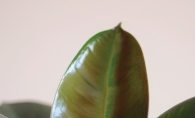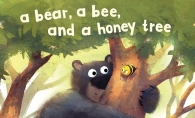Erin Porth knew a good thing when she saw it, and she hasn’t looked back. When some Irish dancers performed at her school, the then-kindergartner fell in love with the style and spirit of the age-old traditional performance. Taking tap and ballet classes at the time, Erin was no stranger to dance, and she was willing to wait an entire year before there was room for her at Edina’s Corda Mór Irish Dance.
There may be no one more pleased that the dance studio has an address of its own than owner Fauna Gille. An Irish dancer since she was 14 years old, Gille opened a dance studio in 2001, when she was fresh out of high school, and opened Corda Mór (meaning great heart) in 2003. The studio rented space from the Edina Community Center and other dance studios until September 2014, when a permanent space was secured. “It is a great community to be a part of, and they are really welcoming,” Gille says of her commitment to stay in Edina.
Nearly 100 dancers, ages 4 to 20 years old, perform and compete at various levels. Students from Edina, St. Louis Park and southwest Minneapolis make up about 80 percent of the students. Gille says local performances can number 50 a year. On occasion, Katie McMahon, former lead singer with Riverdance, and her band are accompanied by the dancers at programs. Competitions include local, state, regional and world events. Two Corda Mór dancers competed at this year’s world competition in Montreal, and placed near and above the top half of the 2,000-plus participants.
An Irish dancer’s costume plays an important role in the performance, and includes ghillies (ballet-like soft shoes), hard shoes with fiberglass tips and heels to assist with noise making—Gille calls them “the percussion piece of the music” –along with “poodle” socks (white knee-socks) and intricately designed dresses styled after Irish peasant dresses worn more than 200 years ago. Corda Mór dancers begin wearing the school’s green dresses until they advance to earn a soloist’s dress. Specialty dressmakers in England and Ireland create the custom dresses for about $2,000. But there are more economical ways to buy a costume. Erin’s dress, for example, was once used by a five-time world champion from Ireland. Previously worn dresses can start at $500. Mom Lori Porth puts the cost in perspective, noting that Erin, now 11 and on the regional team, wears a single dress at least 100 times a year.
Perhaps the most asked-about element of a dancer’s appearance is the crown of bouncy curls, seemingly performing a jig of its own with each step and hop. Gille says, long ago, Irish girls would dance after Sunday mass, when they donned their Sunday best and their hair was curled. The tradition continued, and she says curly-haired wigs became more popular to relieve dancers, teachers and parents from painstakingly curling the girls’ hair.
Lori Porth and Erin note that a familial spirit moves among the dancers and their supporters. “We’re kind of like a big family,” Erin says. Gille finds the benefits of Irish dance twofold. “I think Irish dancing is a joyful form of dance,” she says, noting it also requires mental discipline to memorize steps and commitment to practicing routines. “Sports teach kids so many life lessons,” she says. “For me, it’s a great gift to be a part of that with kids.”
Members of Corda Mór Irish Dance will perform at the annual Irish Fair on August 7-9 at Harriet Island Regional Park in St. Paul. Ticket information and dance schedules are available by visiting irishfair.com.
Corda Mór Irish Dance offers several lesson levels. A beginner class is set to commence after Labor Day. More information is available at their website here.









